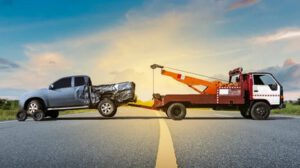The Importance of Having an Emergency Towing Arrangement
Emergency towing is basically when a car is towed temporarily to an auto repair shop, car repair place, or some other convenient location for safekeeping until an authorized driver or owner can come out on-site to take care of the vehicle. Road accidents do occur, and they happen more often than you probably think. There is an estimated six thousand road accident-related fatalities each year. Therefore, there are several reasons why it is essential to call Azteca Towingtruck company if you have a flat tire or if you need a tire change.
There are three standard emergency towing procedures. First, the tow truck will call 911 right away. The crew must then assess whether the vehicle can be towed without damaging the car or other property. If the damage is not too severe, the tow truck will file an emergency report with the local police. Next, the tow truck will inform the vessel’s master and the insurance company.
For larger vehicles, such as passenger cars, vans, or SUVs, the master will direct them to the nearest emergency towing service. Depending on how long the vehicle has been stranded on the road, the vehicle may need emergency towing services for at least twenty-four hours. Vehicles may need emergency towing service even longer if their batteries have failed and the engine has run out of gas.
The crew will also check for mechanical problems that could be the cause of the flat tire. It is important to note that emergency towing means different things to different people. For some people, it means only being able to safely get the vehicle to a nearby location. Other people may use emergency towing means to seek medical assistance during a roadside emergency. It is also possible for emergency towing services to provide emergency medical services in some circumstances.
In some cases, the tow truck driver may choose to call for an additional tow truck just to have two in the fleet. In order to make an emergency towing arrangement, the master of the vehicle and the second tow truck driver must meet. The agreement must include specific time limits so both will agree on the best time to make the pick-up gear changes. The time limits are usually thirty minutes to one hour.
There are a few requirements for this type of towing service. The first requirement is that a properly functioning emergency towing system is in place. Emergency towing requires a working engine, battery, alternator, spare tire, and sufficient fuel for the entire duration of the tow. Furthermore, a properly functioning tow rope is required. In the event of a flat, a tow rope that is attached to the rear bumper on a powerboat is recommended.
The second requirement is that the boat’s transom and bow area must be clear of obstructions. A strong point in the bows area is used as an anchor when a trailer is being used as well as when making the turn into the lake. This strong point, also called a tacking point, allows the tug to turn safely and not hit anything. Additionally, the tacking point ensures that the vessel will be balanced when it makes the turn. When the tow rope is attached to the second tow truck, this point is also used as an anchor.
In some situations, towing arrangements must be made when there is no strong point in the area that the vessel would use for an anchor. In these situations, the tug must make the best judgment call in order to make sure the right course of action is taken. In these situations, a professional technician must review the vessel and make any necessary adjustments. A professional technician is also capable of making alternative towing arrangements if another option is warranted. When there is no strong point in the area, there are many different types of towing equipment available. These options can include, but are not limited to, ski gear, ski lift, and a skipper.
Curry Supply Offers Keystone Service Bodies to Fit Contractors’ Sweet Spot

Curry Supply is introducing a new line of service truck bodies: Keystone and Keystone Pro. The Pro version features a crane body, and both models are built using light-weight, high-strength aluminum.
The crane tower on the Keystone Pro can handle up to a 25,000-foot-pound crane, while still providing compartment space for tool and equipment storage. Custom features and upgrades will be available on both Keystone builds, with work-ready stock trucks ready to ship nationwide beginning in the fourth quarter of 2021. Options include tool drawers and bolt bins, e-track, lube equipment, welder/generators, air compressors and multiple crane models.
Keystone bodies feature a 52-inch-wide and 129-inch-deep bed, with tie-down rings and a textured, slip-resistant floor for added safety. Each side features four compartments, three vertical and one horizontal, with at least 20 inches of depth and adjustable shelving. Protected door seals and stainless-steel rotary latches ensure compartments stay secure and watertight.
“Curry Supply’s introduction of the Keystone line of service bodies will fill a void in the mobile service truck market that we have experienced for quite some time,” says Jeff Shaw, company vice president of sales and marketing.
“Service trucks typically fall on the polar ends of both price and durability. You either have a robust, heavy-duty offering with tons of added content, or a light-duty offering that struggles to keep up in severe-duty environments and doesn’t accept application-specific modifications well. To find the middle ground, buyers are typically left to add light-duty options to an over-built body, or “heavier” options to a body that wasn’t designed to handle it.”
The objective at Keystone was to design a product optimized to hold up well in severe-duty environments and accept application-specific modifications at a lower price than most heavy-duty products, says Shaw. This resulted in features such as reinforced side packs with mounting rails to handle heavier accessories, robust doors, hinges, and weatherproofing.
“All of these address the common complaints contractors voice about light-duty service bodies,” says Shaw. “We reduced content by making crane reinforcement optional, and even still, we only engineered the reinforcements to some of the lighter duty electric/hydraulic cranes common to the applications this product was intended.”
The Keystone and Keystone Pro will be positioned alongside Curry Supply’s current offerings of Stellar, Autocrane, Reading, and Wilcox bodies.
Did you miss our previous article…
https://www.tortowheaton.com/?p=539
Nimble & Productive: Bobcat’s New L65 and L85 Compact Wheel Loaders
Compact wheel loaders continue to grow in popularity as contractors discover their many attributes: how they can dump higher, travel faster and turn tighter than skid steers and compact track loaders. And did we mention they do all this with a smaller engine and great fuel economy?
Bobcat’s latest entries into the compact wheel loader field include the L65 and L85 with standard bucket capacities of up to 1 cubic yard and a Z-bar front linkage. In addition to buckets and pallet forks, the new loaders hook up to a wide range of Bobcat tools and attachments using the powered Bob-Tach system.
The new loaders run on a redesigned Tier 4 Final Bobcat engine with improved cold-weather starting capability and components simplified for routine maintenance. The 2.4-liter turbocharged diesel engines put out 55 and 68 horsepower on the L65 and L85, respectively. The attachment control mode enables you to vary the engine and travel speeds separately to optimize auxiliary hydraulic performance.

Bobcat L85 compact wheel loaderDoosan BobcatA large fuel filter protects the engine from contamination and results in a longer filter life and increased holding capacity. The lift pump and self-priming fuel system offers continuous forced air outflow and eliminates the need for a primer bulb. And a pre-filter protects the lift pump from debris and particles that increase wear and degrade performance.
Articulated steering on the new L65 and L85 loaders delivers high maneuverability and a tight turning radius. The electronic hydrostatic transmission (E-HST) makes quick forward-reverse direction changes efficiently, increasing acceleration and delivering seamless speed control. The combination of the E-HST transmission and horsepower management automatically adjusts the loaders’ drive system to maximize pushing and loading power while minimizing the chance of stalling. Unlike other anti-stall systems, operators can maximize engine and drive torque on the L65 and L85 to match the demands of heavy lifting and digging.
Standard features include two-speed travel, differential lock, inching pedal, LED work lights, bucket level indicator and a 5-inch display with jog shuttle. Upgrade options include an attachment control device (seven pin connector), automatic ride control, enclosed cab with HVAC, rearview camera and a cloth suspension seat.
Quick Specs
Bobcat L65>
• Rated Operating Capacity with Bucket (Straight) 3,133 lb.
• Rated Operating Capacity with Bucket (Articulated) 2,618 lb.
• Rated Operating Capacity with Forks (Straight) 3,759 lb.
• Rated Operating Capacity with Forks (Articulated) 3,172 lb.
• Operating Weight 9,944 lb.
• Auxiliary Std Flow 19.8 gpm
Bobcat L85 >
• Rated Operating Capacity with Bucket (Straight) 3,974 lb.
• Rated Operating Capacity with Bucket (Articulated) 3,257 lb.
• Rated Operating Capacity with Forks (Straight) 4,786 lb.
• Rated Operating Capacity with Forks (Articulated) 3,977 lb.
• Operating Weight 11,164 lb.
• Auxiliary High Flow 27.34 gpm